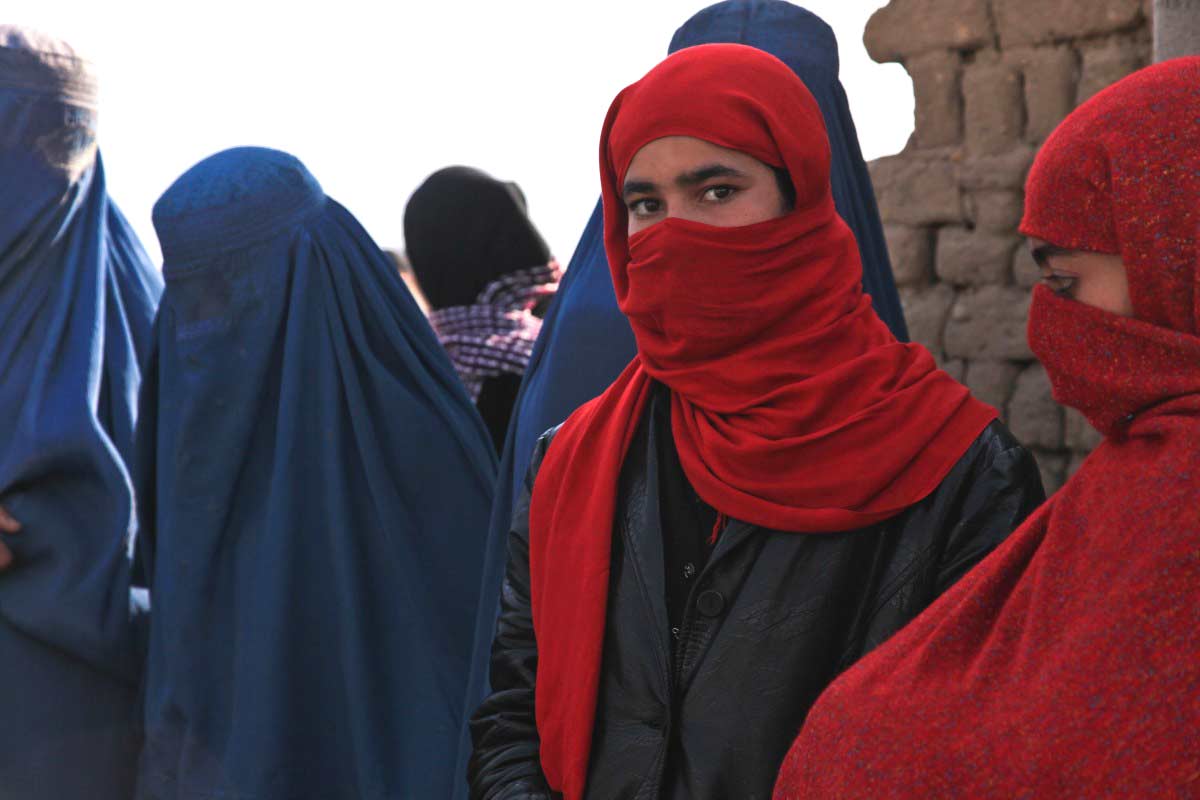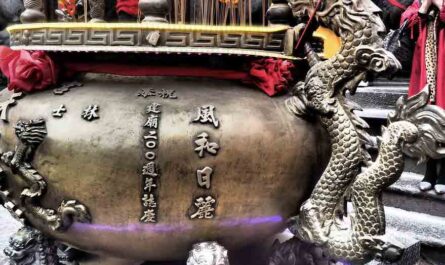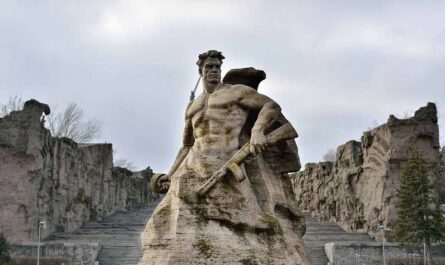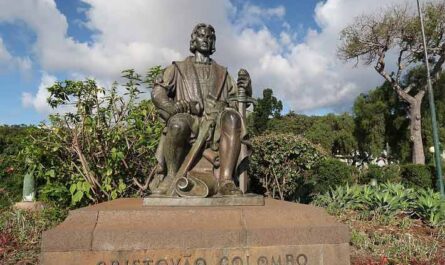What are some of the interesting facts about Syria? Syria, officially known as the Syrian Arab Republic, is a country in Western Asia bordered by Lebanon, the Mediterranean Sea, Turkey, Iraq, Jordan, and Israel. The capital city, Damascus, is one of the oldest continuously inhabited cities in the world, reflecting Syria’s rich historical and cultural heritage. The country has been a crossroads of various civilizations, including the Akkadian, Phoenician, Aramaean, Persian, Hellenistic, Roman, Byzantine, and Islamic empires, each leaving a significant mark on its cultural and architectural landscape. In this article, I will talk about some interesting facts about Syria.
Interesting Facts About Syria: History, Culture, Travel
Modern Syria gained independence from French colonial rule in 1946, and since then, it has experienced a tumultuous history marked by periods of political instability, economic challenges, and conflict. The most recent and devastating conflict, the Syrian Civil War, began in 2011, causing widespread destruction and a humanitarian crisis that has displaced millions of people. Despite these challenges, Syria’s diverse cultural heritage, strategic geographical position, and resilient population continue to shape its complex national identity and influence its role in regional and global affairs. Here are some interesting facts about Syria:
1. Cradle of Civilization: Syria’s Millennia-Long Legacy
Syria stands as a testament to human civilization’s cradle, boasting a rich and storied history that spans millennia. Archaeological evidence points to settlements flourishing in the region as early as the 10th millennium BCE, making it one of the earliest centers of human habitation. As civilizations evolved, Syria became a melting pot of cultures, influencing and being influenced by neighboring regions such as Mesopotamia, Anatolia, and Egypt.
Throughout history, Syria has been pivotal in the development of agriculture, trade, and urbanization. Cities like Ebla, Mari, and Ugarit flourished during the Bronze Age, contributing to advancements in governance, literature, and arts. The region’s strategic location between Asia, Europe, and Africa facilitated cultural exchanges that enriched societies and fostered innovation in architecture, technology, and governance.
2. Damascus: The Ancient Heartbeat of Syria
Nestled amidst Syria’s historical landscape is Damascus, revered as the oldest continuously inhabited city on Earth. With a history spanning over 11,000 years, Damascus has witnessed the rise and fall of empires, the spread of religions, and the flourishing of arts and sciences. As a vital hub along ancient trade routes, Damascus thrived under various civilizations, including the Arameans, Assyrians, Greeks, Romans, and Islamic caliphates.
The city’s architectural marvels, such as the Umayyad Mosque and the Citadel, stand as testaments to its enduring legacy. Damascus has been a center of religious and cultural diversity, fostering coexistence among Muslims, Christians, Jews, and other religious communities. Its bustling markets, or souks, continue to echo with the voices of merchants and traders from across the ages, embodying Damascus’s role as a cultural crossroads.
3. Ancient Cities Tell Syria’s Tale
Syria’s landscape is dotted with ancient cities that serve as windows into its illustrious past. Aleppo, with its imposing citadel and labyrinthine souks, has been a trade hub since the 2nd millennium BCE. Palmyra, renowned for its majestic ruins amidst the desert sands, flourished as a wealthy oasis city under the Romans. Ugarit, along the Mediterranean coast, revealed ancient archives in cuneiform script that shed light on international diplomacy and trade during the Bronze Age.
Each of these cities bears witness to Syria’s historical continuity and resilience amidst the ebb and flow of civilizations. Archaeological treasures unearthed from these sites provide insights into ancient governance, artistry, and cultural practices, preserving a narrative that transcends epochs.
4. Crossroads of Empires: Syria’s Strategic Significance
Syria’s strategic location at the crossroads of empires has shaped its tumultuous yet vibrant history. From the Akkadians and Hittites to the Romans, Byzantines, and Ottomans, Syria has been coveted for its fertile lands and access to trade routes linking Asia, Europe, and Africa. The region’s geopolitical significance has made it a battleground for competing powers, resulting in periods of conquest, assimilation, and cultural exchange.
The influences of successive empires are evident in Syria’s architecture, languages, and cultural traditions. Roman amphitheaters, Crusader castles, and Ottoman mosques coexist with ancient temples and Byzantine churches, creating a tapestry of architectural styles that reflect centuries of diverse rule and cultural interaction.
5. A Mosaic of Religions: Syria’s Cultural Tapestry
Syria’s religious diversity is as ancient as its civilization itself, fostering a vibrant cultural tapestry shaped by Islam, Christianity, Judaism, and other faiths. The country’s religious landscape is marked by sacred sites revered by followers worldwide. Christian monasteries nestled in mountainous regions, ancient synagogues in Jewish quarters, and mosques adorned with intricate tilework stand as symbols of spiritual devotion and architectural brilliance.
Throughout history, Syria has been a haven for religious scholars, mystics, and pilgrims seeking spiritual enlightenment and communal harmony. Despite periods of sectarian tension, the shared reverence for prophets and saints has often transcended religious boundaries, fostering a spirit of mutual respect and coexistence among Syria’s diverse communities.
6. The Umayyad Mosque: Jewel of Islamic Architecture
Among Syria’s architectural gems stands the Umayyad Mosque, also known as the Great Mosque of Damascus. Built during the Umayyad Caliphate in the 8th century, this masterpiece of Islamic architecture remains a symbol of spiritual devotion and cultural pride. Its grand courtyard, adorned with marble and mosaic, surrounds the shrine of John the Baptist and houses the tomb of Saladin, reflecting the mosque’s historical and religious significance.
The mosque’s towering minarets and intricate calligraphy exemplify the artistry and engineering prowess of its builders. Pilgrims and visitors from around the world are drawn to its serene interior, where sunlight filters through stained glass windows, illuminating the prayer hall and ancient texts engraved on its walls. As a center of worship and Islamic scholarship, the Umayyad Mosque continues to inspire awe and reverence, embodying Syria’s enduring contribution to Islamic culture and heritage.
7. Cradle of Aramaic Language: Influencing Linguistic Evolution
Syria holds a significant place in linguistic history as the cradle of the Aramaic language, an ancient Semitic tongue closely related to Hebrew. Originating in the region around 1200 BCE, Aramaic spread widely across the Near East, becoming the lingua franca of the Assyrian and Babylonian empires. Its influence extended to neighboring cultures, impacting the development of languages such as Arabic, Persian, and even Greek.
Aramaic’s legacy in Syria is evident in historical texts, religious scriptures, and inscriptions found throughout ancient cities like Damascus and Aleppo. The language served as a conduit for cultural exchange and trade, facilitating communication across diverse communities and fostering intellectual and literary achievements. Today, remnants of Aramaic survive in modern dialects spoken by Assyrian and Chaldean communities in Syria and beyond, preserving a linguistic heritage rooted in antiquity.
8. Syrian Cuisine: A Fusion of Flavors
Syrian cuisine tantalizes the palate with a rich tapestry of flavors that reflect its diverse cultural influences and regional ingredients. Drawing inspiration from Mediterranean, Middle Eastern, and Persian culinary traditions, Syrian dishes are celebrated for their freshness, spices, and aromatic herbs. Staples such as hummus, made from chickpeas and tahini, and baba ghanoush, a smoky eggplant dip, highlight the artistry of simple yet exquisite flavors.
Grilled meats, seasoned with sumac and served with fragrant rice or flatbreads, showcase Syria’s mastery of kebabs and hearty stews. Dishes like fattoush, a refreshing salad with crispy pita chips, and kibbeh, a savory meat and bulgur wheat dish, exemplify the country’s culinary diversity. Desserts such as baklava and ma’amoul, filled with dates or nuts, offer a sweet conclusion to a meal rich in tradition and hospitality.
9. Aleppo Soap: Time-Honored Craftsmanship
Aleppo, renowned for its ancient soap-making tradition, produces a distinctive olive oil-based soap infused with laurel oil. Dating back centuries, Aleppo soap is cherished for its purity, moisturizing properties, and natural ingredients. Crafted using traditional methods passed down through generations, the soap is cured in sunlit courtyards for up to nine months, resulting in a luxurious bar prized for its gentle cleansing and therapeutic benefits.
The production of Aleppo soap remains a symbol of craftsmanship and cultural heritage in Syria. The city’s artisans continue to uphold time-honored techniques, blending local olive oil with aromatic laurel berries to create soap bars that are sought after worldwide for their quality and eco-friendly credentials.
10. Hama: City of Norias and Traditional Irrigation
Hama, nestled along the banks of the Orontes River, is renowned for its iconic norias, large wooden water wheels that have served as symbols of the city’s ingenuity and agricultural prowess for centuries. These historic water wheels, some dating back to the Byzantine era, were once vital for irrigation and powering grain mills, harnessing the river’s flow to sustain fertile lands and support local agriculture.
Visitors to Hama can witness the rhythmic motion of these norias as they draw water from the Orontes, showcasing traditional irrigation methods that have shaped the region’s agricultural landscape. The city’s commitment to preserving its cultural heritage is evident in efforts to maintain and restore these ancient water wheels, ensuring they remain a testament to Hama’s engineering achievements and enduring connection to the land.
11. Cradle of Alphabet: Birthplace of Writing Systems
Syria is recognized as the birthplace of the Phoenician alphabet, the earliest known writing system that revolutionized communication and literacy across the ancient world. Developed around 1200 BCE in the coastal cities of Byblos, Tyre, and Sidon, the Phoenician alphabet consisted of 22 consonantal letters, laying the foundation for subsequent alphabetic scripts such as Greek, Latin, and Cyrillic.
The Phoenician alphabet’s simplicity and adaptability made it a revolutionary tool for recording language, trade transactions, and religious texts. Its widespread adoption by neighboring cultures, including Hebrew and Aramaic, contributed to the preservation and dissemination of knowledge across the Mediterranean and beyond. The legacy of Syria’s role in the evolution of writing systems endures in the archaeological remains and ancient inscriptions that continue to be discovered, shedding light on the origins of literacy and cultural exchange in human history.
12. Ebla Tablets: Unlocking Ancient Mysteries
Discovered in the ancient city of Ebla (modern-day Tell Mardikh) in Syria, the Ebla tablets represent one of the most significant archaeological finds of the 20th century. Dating back to the 3rd millennium BCE, these clay tablets inscribed in cuneiform script provide valuable insights into the political, economic, and cultural life of the Eblaite civilization. The tablets document diplomatic correspondence, trade agreements, and administrative records that illuminate Ebla’s prominence as a regional power and trading center.
Among the discoveries are references to cities, commodities, and individuals that shed light on ancient Near Eastern politics and commerce. The Ebla tablets also contain early examples of Semitic languages, including Akkadian and Sumerian, highlighting Syria’s role in the development and dissemination of written language in the ancient world. As artifacts of a lost civilization, the Ebla tablets continue to captivate scholars and enthusiasts alike, offering a glimpse into Syria’s rich archaeological heritage and the complexities of ancient urban life.
13. Stunning Landscapes: Diverse Natural Beauty
Syria’s landscapes offer a diverse tapestry of natural beauty, ranging from rugged mountains to expansive deserts, fertile plains, and a picturesque Mediterranean coastline. In the west, the coastal region along the Mediterranean Sea boasts sandy beaches and rocky cliffs that contrast with lush greenery. Moving inland, the landscape transitions to fertile plains such as the Ghab and Barada valleys, where agriculture thrives amidst olive groves and orchards.
To the east, the Syrian Desert (also known as the Eastern Desert) stretches across vast expanses of arid terrain, punctuated by oases that sustain life amid the harsh environment. This desert region is home to ancient caravan routes and archaeological sites that highlight Syria’s historical importance as a crossroads of civilizations. Northern Syria is crisscrossed by the Euphrates and Tigris rivers, which originate in Turkey and flow southward, nourishing fertile lands and supporting agricultural communities.
14. Euphrates and Tigris Rivers: Cradles of Civilization
The Euphrates and Tigris rivers play a pivotal role in Syria’s geography and history, serving as lifelines that have shaped the development of ancient civilizations in the region. Originating in the mountains of Turkey, these rivers flow through northern Syria, where their waters have historically supported agriculture and provided vital transportation routes. The fertile plains along their banks were home to early Mesopotamian cultures, including the Sumerians, Akkadians, Babylonians, and Assyrians, whose achievements in agriculture, writing, and governance laid the foundation for Western civilization.
Today, the Euphrates and Tigris rivers continue to influence Syria’s economy and environment, supporting irrigation projects, hydroelectric power generation, and regional stability. Their historical significance as cradles of civilization underscores Syria’s role in preserving and promoting cultural heritage amidst modern challenges.
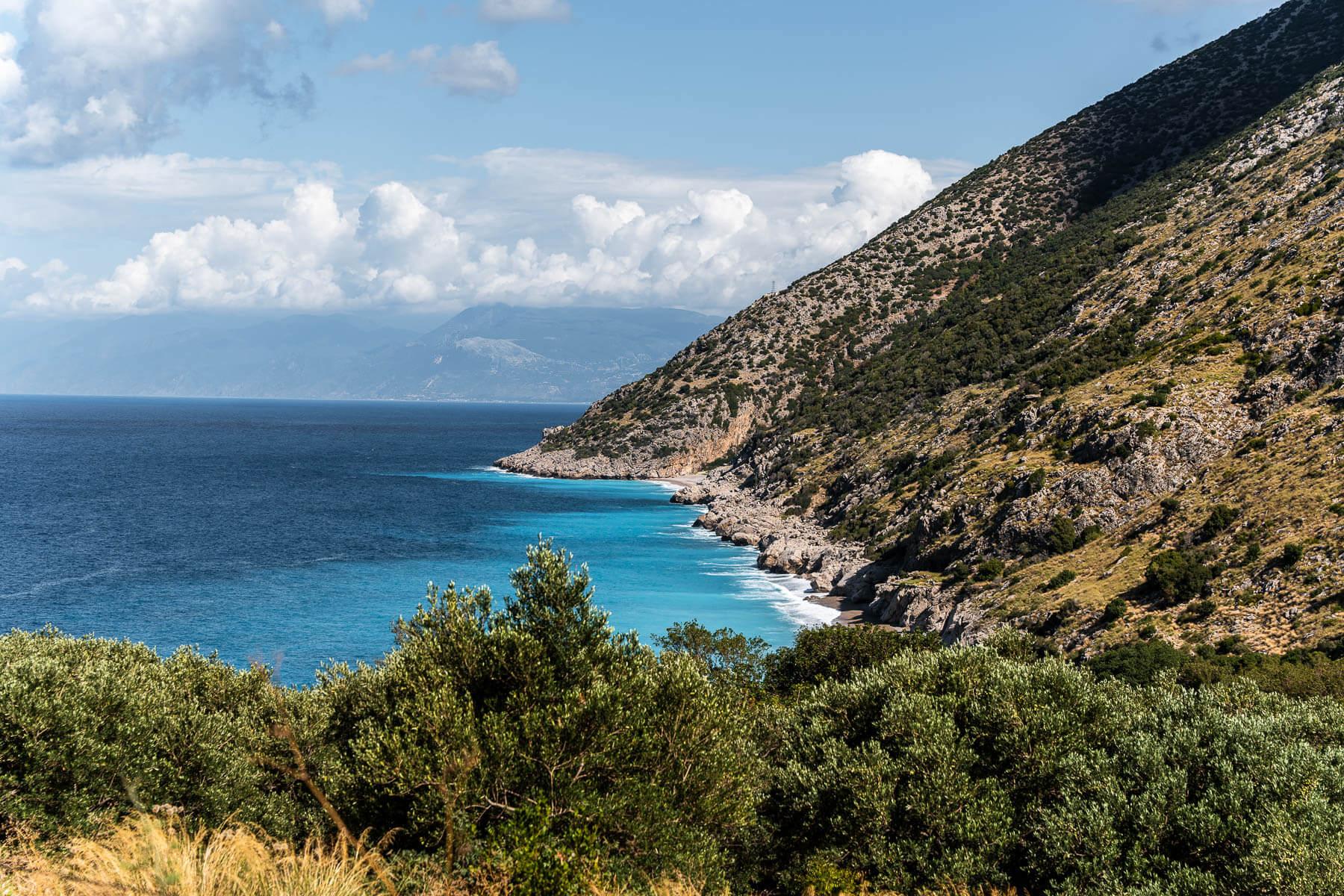
15. UNESCO World Heritage Sites: Guardians of History
Syria boasts a rich cultural heritage that is preserved in its six UNESCO World Heritage Sites, each offering a glimpse into the country’s storied past. The ancient city of Damascus, with its labyrinthine streets and historical landmarks such as the Umayyad Mosque and Al-Azem Palace, stands as a testament to millennia of architectural and artistic achievement. Aleppo, once a bustling trade hub along the Silk Road, is renowned for its citadel and ancient souks that reflect its diverse cultural influences.
The ancient city of Bosra, with its well-preserved Roman theater, attests to Syria’s Roman heritage and architectural prowess. Palmyra, located in the heart of the Syrian Desert, showcases monumental ruins that blend Greco-Roman and Persian influences, while Crac des Chevaliers, a Crusader castle, symbolizes medieval military architecture. These UNESCO sites not only draw visitors from around the world but also underscore Syria’s commitment to safeguarding its cultural treasures amid the challenges of conflict and preservation.
16. The Syrian Civil War: Impact and Challenges
Since its onset in 2011, the Syrian Civil War has inflicted profound devastation on the country’s infrastructure, economy, and social fabric. What began as a series of peaceful protests demanding political reforms escalated into a protracted conflict involving multiple armed factions, regional powers, and international interventions. The war has resulted in widespread destruction of cities, displacement of millions of Syrians, and loss of countless lives.
Syria’s cities, including Damascus and Aleppo, have borne the brunt of airstrikes, bombings, and urban warfare, leading to irreparable damage to historical monuments and cultural sites. The conflict has disrupted essential services such as healthcare and education, exacerbating humanitarian needs and perpetuating cycles of poverty and vulnerability among the population.
17. Refugee Crisis: Humanitarian Impact
The Syrian Civil War has triggered one of the largest humanitarian crises of the 21st century, forcing millions of Syrians to flee their homes in search of safety and stability. Many have sought refuge in neighboring countries such as Turkey, Lebanon, Jordan, and Iraq, while others have embarked on perilous journeys to Europe and beyond. The influx of refugees has strained host communities and humanitarian aid efforts, posing significant socio-economic challenges for receiving countries.
Internally displaced Syrians face dire conditions in makeshift camps and urban settlements, grappling with limited access to basic necessities and livelihood opportunities. The international community has responded with humanitarian aid, resettlement programs, and efforts to facilitate dialogue and conflict resolution. Despite these efforts, the plight of Syrian refugees remains a pressing global concern, highlighting the urgent need for sustainable solutions and support for displaced populations.
18. Resilience of the Syrian People: Upholding Heritage and Hope
Throughout the turmoil of war and displacement, the Syrian people have demonstrated remarkable resilience and fortitude, holding steadfast to their cultural traditions and collective identity. Despite the destruction of historical landmarks and societal upheaval, Syrians continue to celebrate their rich cultural heritage through music, art, cuisine, and storytelling. Traditional crafts such as carpet weaving, pottery making, and metalwork serve as symbols of resilience and cultural continuity amidst adversity.
Communities have come together to rebuild neighborhoods, preserve cultural sites, and support each other through grassroots initiatives and humanitarian efforts. Civil society organizations, cultural institutions, and local leaders play a crucial role in promoting reconciliation, dialogue, and rebuilding efforts that prioritize inclusive development and sustainable peace.
19. Importance of Olive Oil in Syrian Agriculture
Olive oil holds a prominent position in Syrian agriculture, representing not only a significant economic sector but also a cultural cornerstone deeply rooted in the country’s history. Syria boasts a long tradition of olive cultivation, with olive trees thriving in the fertile lands of regions like the coastal plains and the foothills of the Anti-Lebanon mountains. The cultivation of olives dates back thousands of years, shaping agricultural practices and livelihoods across generations.
Syrian olive oil is renowned for its quality and versatility, prized for its rich flavor and health benefits. It serves as a staple in the Mediterranean diet, contributing to culinary traditions that celebrate fresh ingredients and wholesome cooking. Olive oil production supports rural communities, providing employment opportunities and sustaining local economies through processing facilities, cooperatives, and exports.
Beyond its economic importance, olive oil symbolizes resilience and perseverance in Syrian culture, embodying traditions of hospitality and communal sharing. Families often gather during olive harvest season, participating in age-old rituals that emphasize cooperation and stewardship of the land. As Syria navigates challenges posed by conflict and environmental changes, the olive tree remains a symbol of hope and continuity, nurturing both livelihoods and cultural heritage.
20. Endangered Species: Conservation Challenges in Syria
Syria’s diverse wildlife is under threat due to habitat loss, poaching, and the destabilizing effects of war. The country’s natural landscapes once supported a variety of species, including the Syrian brown bear, the Syrian wild ass, and numerous bird species migrating along the Eastern Mediterranean Flyway. However, decades of conflict have taken a toll on biodiversity, disrupting ecosystems and diminishing habitats essential for wildlife survival.
Efforts to protect endangered species face significant challenges amid ongoing conflict and socioeconomic instability. Conservation organizations and local initiatives strive to mitigate threats through wildlife reserves, habitat restoration projects, and public awareness campaigns. Collaborative efforts with international partners aim to safeguard Syria’s natural heritage, promoting sustainable development practices that balance conservation with human needs.
Despite these challenges, Syria’s commitment to preserving its biodiversity underscores the resilience of conservation efforts amidst adversity. By prioritizing wildlife protection and environmental stewardship, Syrians aim to safeguard endangered species for future generations, fostering a legacy of biodiversity conservation and ecological resilience.
21. Architectural Gems: Treasures of Syria’s Built Heritage
Syria’s architectural heritage is a testament to its rich history and cultural diversity, encompassing ancient ruins, medieval fortifications, Ottoman-era mosques, and traditional houses. From the towering minarets of Aleppo’s Great Mosque to the Crusader castles of Krak des Chevaliers and the Roman ruins of Palmyra, Syria’s architectural landscape reflects centuries of architectural innovation, craftsmanship, and artistic expression.
Each architectural gem tells a story of dynasties and civilizations that have shaped Syria’s urban centers and rural landscapes. Byzantine churches, Umayyad palaces, and Mamluk madrasas showcase a blend of artistic styles and architectural techniques influenced by Byzantine, Persian, and Islamic traditions. Ottoman-era caravanserais and hammams provide glimpses into Syria’s role as a crossroads of trade and cultural exchange, where merchants and travelers converged along ancient caravan routes.
Despite the devastating impact of conflict on Syria’s architectural heritage, efforts to preserve and restore cultural sites continue through local and international initiatives. Conservation projects aim to safeguard monuments, protect archaeological sites, and promote sustainable tourism that celebrates Syria’s cultural legacy. These architectural treasures not only inspire admiration but also serve as enduring symbols of resilience, perseverance, and the enduring spirit of Syria’s cultural heritage.
22. Music and Dance: Celebrating Syria’s Cultural Tapestry
Syrian music and dance traditions are vibrant expressions of the country’s cultural diversity, blending influences from Arab, Turkish, Kurdish, and Armenian communities. Music plays a central role in social gatherings, religious ceremonies, and festive celebrations, reflecting the rhythms of daily life and seasonal festivities.
Traditional instruments such as the oud (lute), qanun (zither), and ney (flute) accompany melodic compositions that evoke themes of love, nature, and spirituality. Vocal performances range from classical Arabic maqam to folk songs that narrate tales of heroism and romance. Dance forms such as dabke, a line dance characterized by synchronized foot stomping and hand clapping, embody communal solidarity and cultural pride.
Syria’s music and dance traditions continue to evolve, embracing contemporary influences while preserving ancestral roots and regional variations. Festivals, concerts, and cultural events showcase diverse musical genres and dance styles, fostering cross-cultural dialogue and artistic innovation. Through music and dance, Syrians celebrate their cultural identity and heritage, uniting communities and bridging generations through shared artistic expressions.
23. Storytelling Traditions: Oral Narratives Across Generations
Oral storytelling occupies a cherished place in Syrian culture, serving as a means of preserving history, transmitting knowledge, and fostering community cohesion. From ancient epics and folk tales to family sagas and moral parables, oral narratives convey values, traditions, and collective memories that shape cultural identity.
Storytellers, known as hakawatis, captivate audiences with their mastery of language, gesture, and theatricality, recounting tales of heroism, adventure, and wisdom. Stories often incorporate elements of mythology, folklore, and religious symbolism, offering insights into societal norms, moral codes, and the human experience.
Across Syria’s diverse regions, storytelling traditions vary, reflecting local dialects, customs, and cultural influences. In urban centers like Damascus and Aleppo, coffeehouses and cultural gatherings provide venues for storytellers to share their craft with eager listeners. In rural communities, storytelling serves as a communal ritual during social gatherings and festive occasions, fostering bonds between generations and preserving cultural continuity.
As Syria confronts the challenges of modernity and social change, oral storytelling remains a resilient and dynamic tradition that adapts to evolving contexts while preserving the essence of Syrian heritage. By passing down stories from one generation to the next, Syrians honor their past, celebrate their present, and envision a future enriched by the enduring power of narrative.
24. Coffee Culture: Social Rituals and Hospitality
Coffee holds a cherished place in Syrian culture, serving as a symbol of hospitality, social connection, and cultural tradition. Introduced to Syria during the Ottoman era, coffeehouses, known as qahwa, became hubs of intellectual discourse, social interaction, and leisurely pastimes. Today, coffee continues to be enjoyed in homes, cafes, and gatherings throughout Syria, embodying rituals of warmth and conviviality.
Syrian coffee, typically served strong and black, is brewed in traditional dallah pots and flavored with cardamom for a distinctive aroma and flavor. The preparation and serving of coffee adhere to customs that emphasize generosity and respect for guests, with elaborate rituals such as pouring coffee from a cezve into small, handleless cups known as finjans.
Coffeehouses in Syria offer more than just a beverage; they provide spaces for conversation, debate, and cultural exchange among patrons of all ages. From morning coffee rituals to afternoon tea breaks and evening gatherings, coffee culture fosters bonds of friendship and community solidarity. As Syrians navigate challenges and transformations, coffee remains a cherished tradition that brings people together, nurturing social cohesion and preserving cultural heritage amidst the ebb and flow of time.
25. Challenges for Reconstruction: Rebuilding Syria’s Foundations
The aftermath of the Syrian Civil War presents a monumental challenge in rebuilding the country’s infrastructure, economy, and social fabric. Decades of conflict have left cities in ruins, with widespread destruction of homes, hospitals, schools, and critical infrastructure such as water and electricity systems. Reconstructing these vital foundations is essential for restoring normalcy and enabling displaced Syrians to return to their communities.
The task of reconstruction is not just about physical rebuilding but also about addressing deep-seated socio-economic issues exacerbated by the war. Efforts must prioritize sustainable development practices that promote resilience, inclusivity, and environmental stewardship. International assistance, humanitarian aid, and partnerships with civil society organizations are crucial for supporting reconstruction efforts and ensuring that they benefit all segments of society, including vulnerable populations.
As Syria embarks on the journey of reconstruction, challenges such as funding constraints, political complexities, and logistical hurdles loom large. However, the resilience and determination of the Syrian people, coupled with support from the international community, offer hope for a future where stability, prosperity, and peace prevail.
26. Archaeological Discoveries: Unveiling Syria’s Ancient Treasures
Syria’s archaeological landscape continues to yield new discoveries that shed light on the country’s rich and complex history spanning millennia. Excavations at sites such as Palmyra, Mari, and Tell Mozan (ancient Ebla) have unearthed artifacts, inscriptions, and architectural remains that deepen our understanding of ancient civilizations that once flourished in the region.
Recent archaeological finds include ancient tombs, temples, and palaces adorned with intricate carvings and artifacts that illuminate daily life, religious practices, and artistic achievements of past societies. These discoveries not only enrich global knowledge of human history but also underscore Syria’s role as a cradle of civilization and a crossroads of cultural exchange.
Despite the challenges posed by conflict and looting of archaeological sites, ongoing excavations and preservation efforts by Syrian and international archaeologists demonstrate a commitment to safeguarding cultural heritage. The documentation, conservation, and interpretation of these discoveries are vital for preserving Syria’s cultural legacy and promoting tourism as a means of economic revitalization.
27. The Importance of Education: Nurturing Syria’s Future Generations
Education is fundamental to Syria’s recovery and future prosperity, serving as a cornerstone for rebuilding communities, fostering reconciliation, and empowering youth. The war disrupted access to education for millions of Syrian children and adolescents, leading to widespread school closures, teacher shortages, and loss of learning opportunities.
Efforts to rebuild schools, rehabilitate educational facilities, and train educators are essential for ensuring that every child has access to quality education. Initiatives to develop curriculum, textbooks, and teaching materials that promote peacebuilding, tolerance, and civic engagement are crucial for shaping a new generation of Syrians who are equipped with the knowledge and skills to contribute positively to society.
Beyond formal education, programs that support vocational training, adult literacy, and higher education opportunities play a vital role in empowering individuals and rebuilding livelihoods devastated by conflict. International support for education initiatives, including scholarships, teacher training programs, and school rehabilitation projects, is critical for accelerating Syria’s recovery and fostering a future where education catalyzes sustainable development and social cohesion.
28. Hope for the Future: Building a Peaceful Syria
Despite the daunting challenges posed by conflict and displacement, there is hope for a peaceful and prosperous future for Syria. The resilience and determination of the Syrian people, coupled with support from the international community, are laying the groundwork for rebuilding communities, restoring trust, and fostering reconciliation.
Efforts to promote dialogue, inclusive governance, and respect for human rights are essential for healing divisions and building a society based on justice, equality, and dignity. Civil society organizations, community leaders, and grassroots initiatives play a crucial role in advocating for peace, promoting social cohesion, and addressing the root causes of conflict.
Economic revitalization, reconstruction of infrastructure, and job creation initiatives are pivotal for restoring livelihoods and providing opportunities for Syrians to rebuild their lives with dignity and hope. Sustainable development practices that prioritize environmental protection, renewable energy, and inclusive growth are essential for building resilience against future challenges. RPM 3.0 – 60% CONVERSION & Money for Affiliate Marketing
As Syria navigates the path to recovery, the aspirations of its people for peace, stability, and prosperity serve as guiding principles for rebuilding a nation where all Syrians can live in safety, thrive, and contribute to a brighter future.
29. A Complex and Fascinating Country: Rediscovering Syria’s Riches
Syria is a land of profound historical significance, diverse cultures, and enduring strength that awaits rediscovery amidst its current challenges. From the ancient cities of Damascus and Aleppo to the serene landscapes of the Mediterranean coast and the rugged beauty of the Syrian Desert, the country’s allure lies in its rich tapestry of human civilization and natural splendor.
The complexities of Syria’s history, marked by periods of prosperity, cultural flourishing, and resilience in the face of adversity, offer a compelling narrative of human achievement and resilience. Architectural gems such as Roman ruins, medieval castles, and Ottoman-era mosques stand as testaments to Syria’s architectural prowess and artistic heritage shaped by successive civilizations.
Syrian music, dance, cuisine, and storytelling traditions reflect the country’s cultural diversity and the spirit of communal solidarity that transcends ethnic, religious, and linguistic differences. Coffeehouses, souks, and cultural festivals continue to animate Syria’s urban centers and rural communities, fostering connections and preserving traditions that bind generations together.
As Syria rebuilds and looks toward the future, its complexities and contradictions serve as a reminder of the resilience and vitality of its people. Despite the challenges of conflict and displacement, Syria’s cultural heritage remains a source of pride, identity, and hope for a future where peace, prosperity, and unity prevail.
